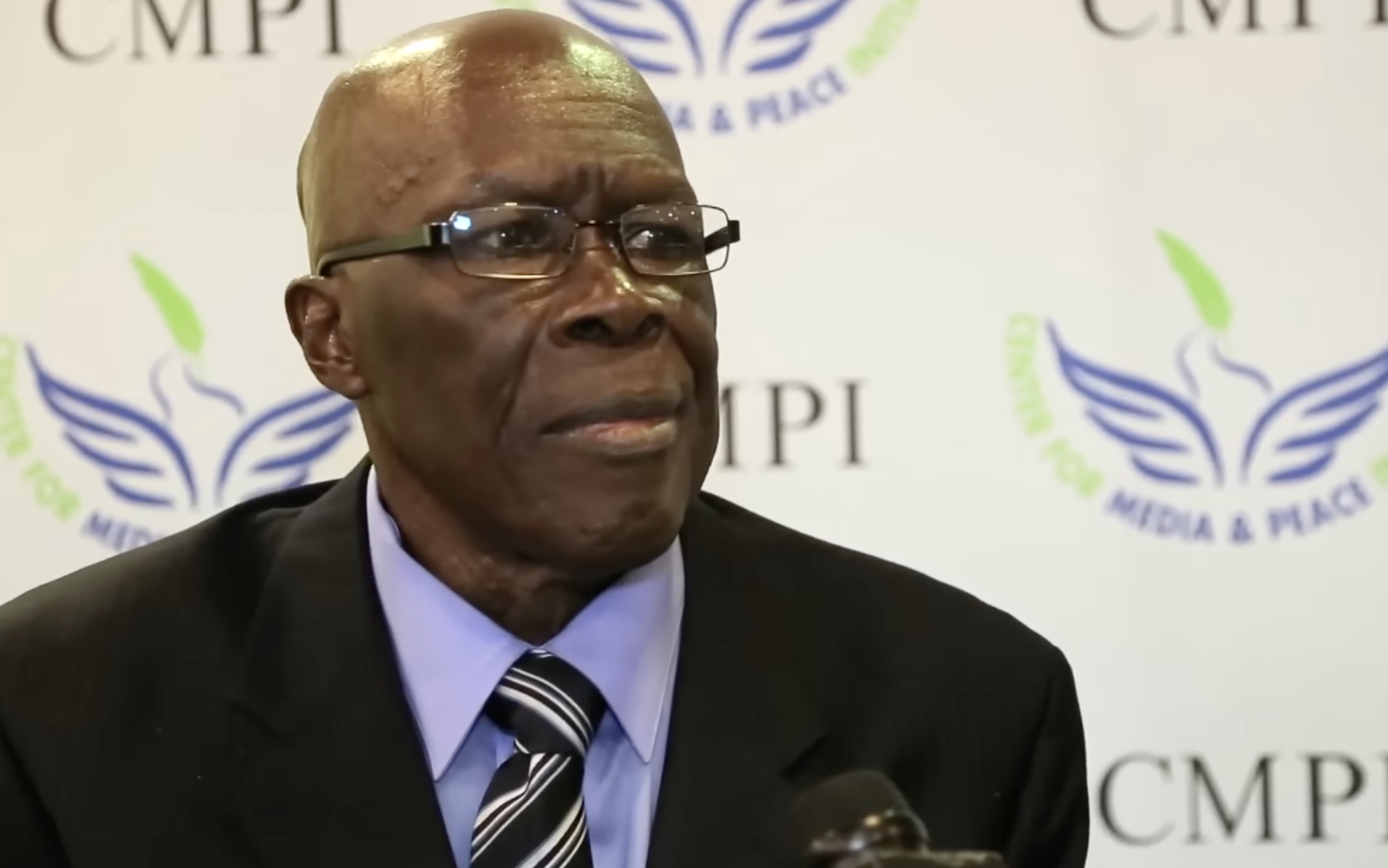California Dreaming: The evolution of The Beach Boys' iconic look
The magic of The Beach Boys lay in their uncanny ability to transport listeners to California’s sun-drenched shores - no matter where you were or when you pressed play.
The band embodied a form of American escapism, sun, surf and endless youth, at a time when postwar idealism was giving way to cultural unrest. Their tightly curated look mirrored their clean-cut discography - plaid Pendleton shirts, white jeans, plain tees and desert boots, projecting an image of wholesome Los Angeles ease. It was fashion that mirrored their music - clean, melodic, and anchored in a romanticised version of laid-back West Coast life.
You may also like
Formed in Hawthorne, California in 1961, The Beach Boys were the brainchild of brothers Brian, Dennis, and Carl Wilson, their cousin Mike Love, and friend Al Jardine. Initially known for upbeat surf anthems like Surfin' U.S.A. and California Girls, they captured the sound of the West Coast with sun-soaked harmonies and teenage optimism. Although only Dennis surfed, the band became cultural ambassadors for California’s beach lifestyle.
Behind the scenes, Brian Wilson emerged as a studio visionary, pushing the group into more ambitious territory. Their 1966 album Pet Sounds, a richly orchestrated, emotionally complex work, influenced generations and rivalled The Beatles in innovation. However, Brian’s mental health struggles, relationship with controversial therapist Eugene Landy and the changing music landscape led to a period of decline.
Despite internal tensions, legal battles, and changing lineups, The Beach Boys endured. Their legacy remains one of pioneering pop craftsmanship, sun-drenched nostalgia, and the bittersweet brilliance of the American dream.
In their early years, The Beach Boys cultivated a preppy, all-American image that perfectly reflected the innocent lightheartedness of their music. Often photographed in matching outfits, most iconically their blue and grey Pendleton flannel shirts paired with white jeans, they radiated a uniformed wholesomeness. The look was simple, approachable, and strategic, suggesting harmony, brotherhood, and a lifestyle centred around surf, sand, and laid-back suburbia.
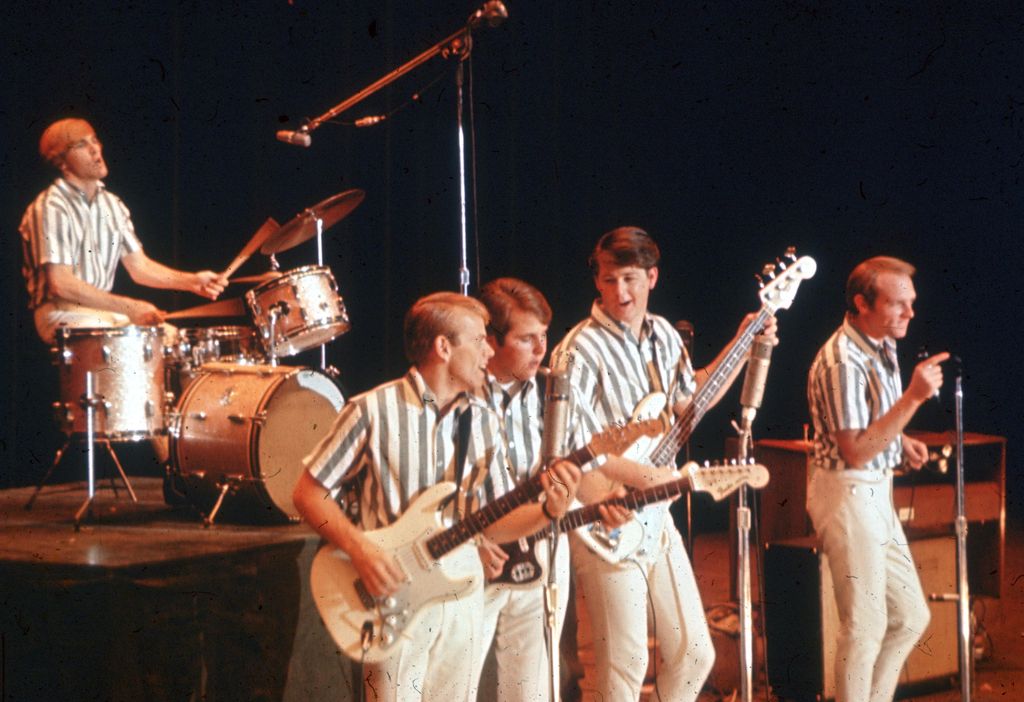 © Getty
© Getty
Their styling borrowed heavily from the West Coast teen surf scene. Printed shirts tucked into chinos with rolled-up cuffs, crewneck sweatshirts, plain tees, and side-swept locks that had been kissed by the Californian sunshine. The group looked like the clean-shaven boy from next door, selling an idyllic version of coastal youth rather than leaning into heavy rock ‘n’ roll like fellow early Sixties contemporaries such as The Rolling Stones.
"The Beach Boys helped define both sides of the era we broadly call the sixties, split between their early surf, car, and summer pop and their later hippie, counterculture, and ambitious rock" - Tom Smucker, Why The Beach Boys Matter
The band's peak years were between 1962 and 1966, with 1964 proving to be a turning point for the band. The Beach Boys toured extensively during this year, eventually dismissing the Wilsons' father Murry as their manager which sparked internal family issues.
During the time, the image of The Beach Boys gently evolved. While their on-stage attire stayed the same, their tour looks became more diverse. Double-breasted coats with fur trims, heavyweight leather jackets and in Mike Love's case, berets, become part of the sartorial agenda when the band were on the road.
 © Getty Images
© Getty Images
 © Getty Images
© Getty Images
When the band weren't in LA, they leaned into Euro-centric trends, styling out turtleneck knits, suede, Seventies-cut suits and muted earth tones - a far cry from the preppy blue-white stripes of their beach-ready style.
This sartorial shift was no doubt catalysed by the arrival of Beatlemania in the US - which had Brian rattled. The British Invasion was a seismic cultural change, one that threatened The Beach Boys’ homegrown dominance. Reflecting in 1966, Brian admitted: “The Beatles invasion shook me up a lot…so we stepped on the gas a little bit.” That same year, the band released I Get Around, their first US number one, and in many ways, a confident retort to the Liverpool takeover. This marked the unofficial beginning of Brian's iconic creative rivalry with Paul McCartney.
Brian's mental health began to decline in the mid-1960s, around the time he was working on the ambitious Pet Sounds (1966) and the unfinished Smile project. The intense pressure to compete with contemporaries like The Beatles, combined with drug use and underlying psychological struggles, including what would later be diagnosed as schizoaffective disorder, contributed to his deteriorating mental state.
 © Getty
© Getty
By late 1964, he had grown tired of the band’s surf-centric identity, preferring to evolve the sound and style into something more expansive.
This was very much reflected in what the musician wore. Gone were the wide grins and matching uniforms of the Hawthorne-natives. Instead, Brian opted for more casual garments, T-shirts with raised necklines (his signature), white trousers, pea coats and plimsolls. His wardrobe during the mid 1960s was best captured in Bill Pohlad's 2014 biographical drama Love & Mercy, starring Paul Dano and John Cusack.
"...the group that went right to the genesis of California music" - Jan Wenner, Rolling Stone
In the late 1960s, The Beach Boys' golden image of sun, surf and clean-cut Americana began to fade - both musically and culturally. As psychedelia and protest replaced carefree pop, their wholesome brand started to feel out of step with the countercultural tide. Brian, once the group's creative heartbeat, was spiralling. In 1967, he withdrew from public life, retreating into isolation at home.
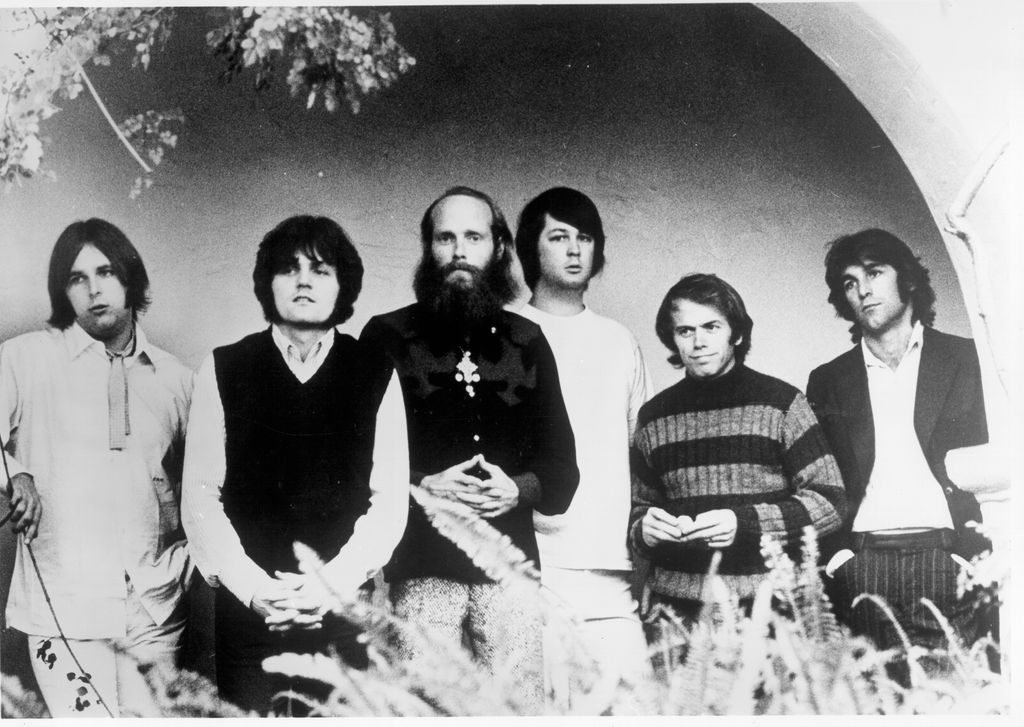 © Getty
© Getty
The rest of the band struggled to fill the creative void, releasing albums that were often critically underrated, but failed to recapture their former chart-topping glory. Their image, once tightly controlled and uniform, began to fragment - beards, looser clothes, and a pivot toward introspective songwriting reflecting the cultural shift.
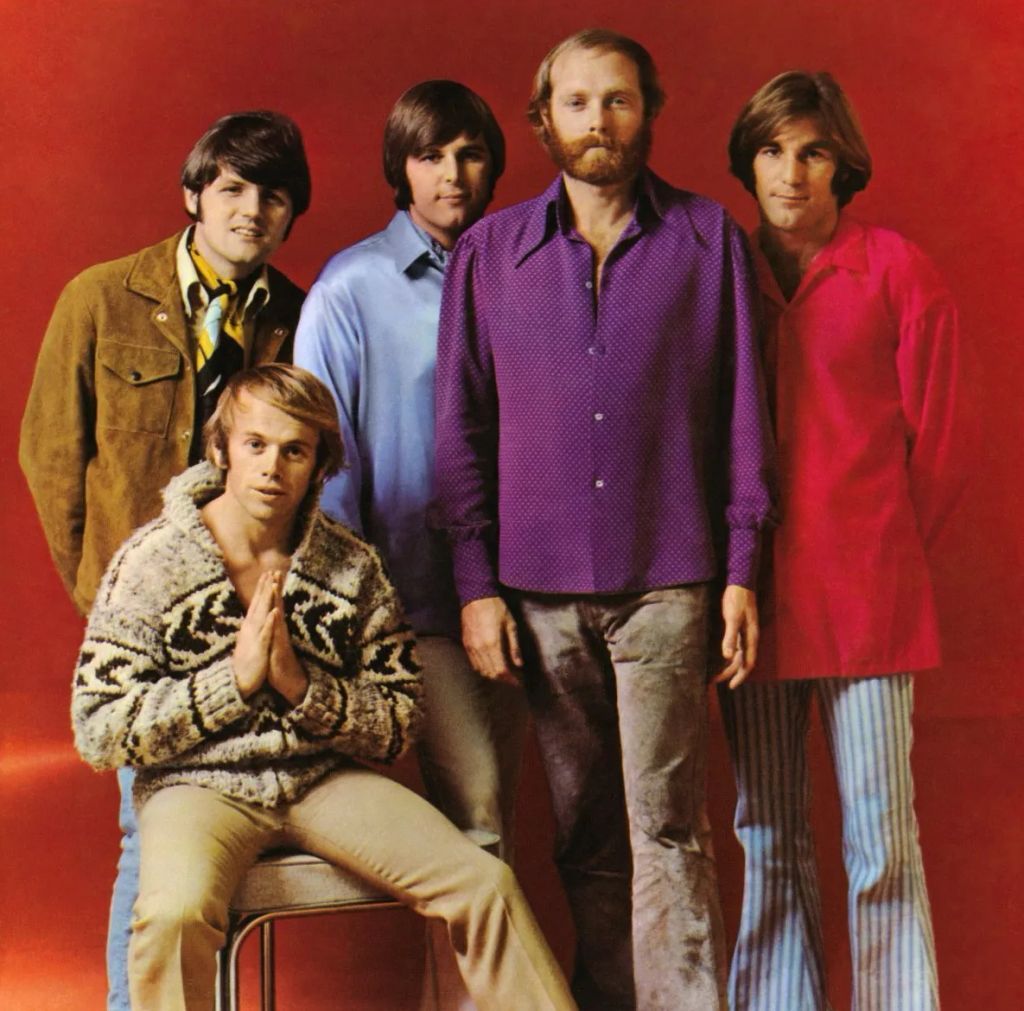
Perhaps most infamously, drummer Dennis Wilson became entangled with the Manson Family in 1968, after picking up two female members hitchhiking. He later allowed Charles Manson and his followers to stay in his home, not fully aware of the darkness ahead. While Dennis eventually distanced himself, the association added a chilling shadow to the band’s legacy - an unsettling contrast to their sunny beginnings.
The 1970s were a tumultuous decade for The Beach Boys, both sonically and visually. With Brian largely absent until 1975 due to mental health struggles, the rest of the band, particularly Carl and Dennis Wilson, stepped forward creatively. Albums like Sunflower (1970) and Holland (1973) showcased a more mature, reflective sound, though commercial success was limited. Dennis, in particular, gained acclaim for his solo work, especially Pacific Ocean Blue (1977), which revealed a raw, soulful edge far removed from the band’s early surf pop.
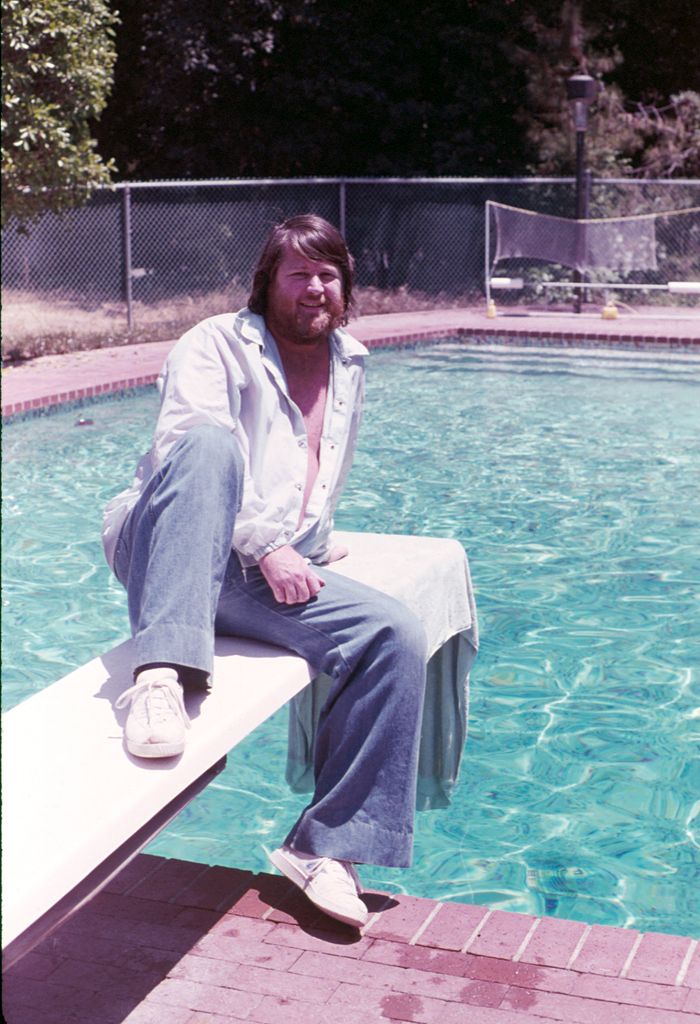 © Getty
© Getty
As their music deepened, so did their look. Long hair, denim, leather, and a hint of California bohemia defined their onstage presence - mirroring the broader shift in rock culture. They no longer looked like suburban poster boys, but rather seasoned musicians shaped by fame, friction and changing times. Still, they maintained a loyal fanbase, buoyed by their timeless hits and a growing critical reassessment of their artistry.
In 1975, Brian was introduced to therapist Eugene Landy by his wife Marilyn. Although his methods were deemed highly controversial, Landy managed to help Brian get back up on stage and begin touring again with the band.
 © Getty Images
© Getty Images
 © WireImage
© WireImage
The late Seventies saw Dennis break visually from the group's look - no doubt due to his substance abuse, unstable relationships, and increasing estrangement from the band. His lifestyle grew increasingly erratic, reflected in his disheveled rock 'n' roll appearance. Tragically, on December 28, 1983, Dennis drowned at Marina del Rey after diving into the harbour to retrieve belongings he had thrown overboard from his boat years earlier. He was 39.
"God Only Knows is one of the few songs that reduces me to tears every time I hear it. It's really just a love song, but it's brilliantly done. It shows the genius of Brian" - Sir Paul McCartney
The 1980s saw The Beach Boys pivot towards nostalgia as their creative momentum slowed. Their earlier albums were reissued to great success, and the band increasingly became a staple of the American nostalgia circuit. With Reagan-era audiences craving comfort and familiarity, the group leaned into their sunny past, performing classics like Good Vibrations and California Girls at Fourth of July events and corporate functions.
In 1988, they unexpectedly returned to the top of the charts with Kokomo, a tropical, easy-listening single featured in the film Cocktail. It was a commercial triumph, but critically divisive - some felt it strayed too far from the artistry of their 1960s peak.
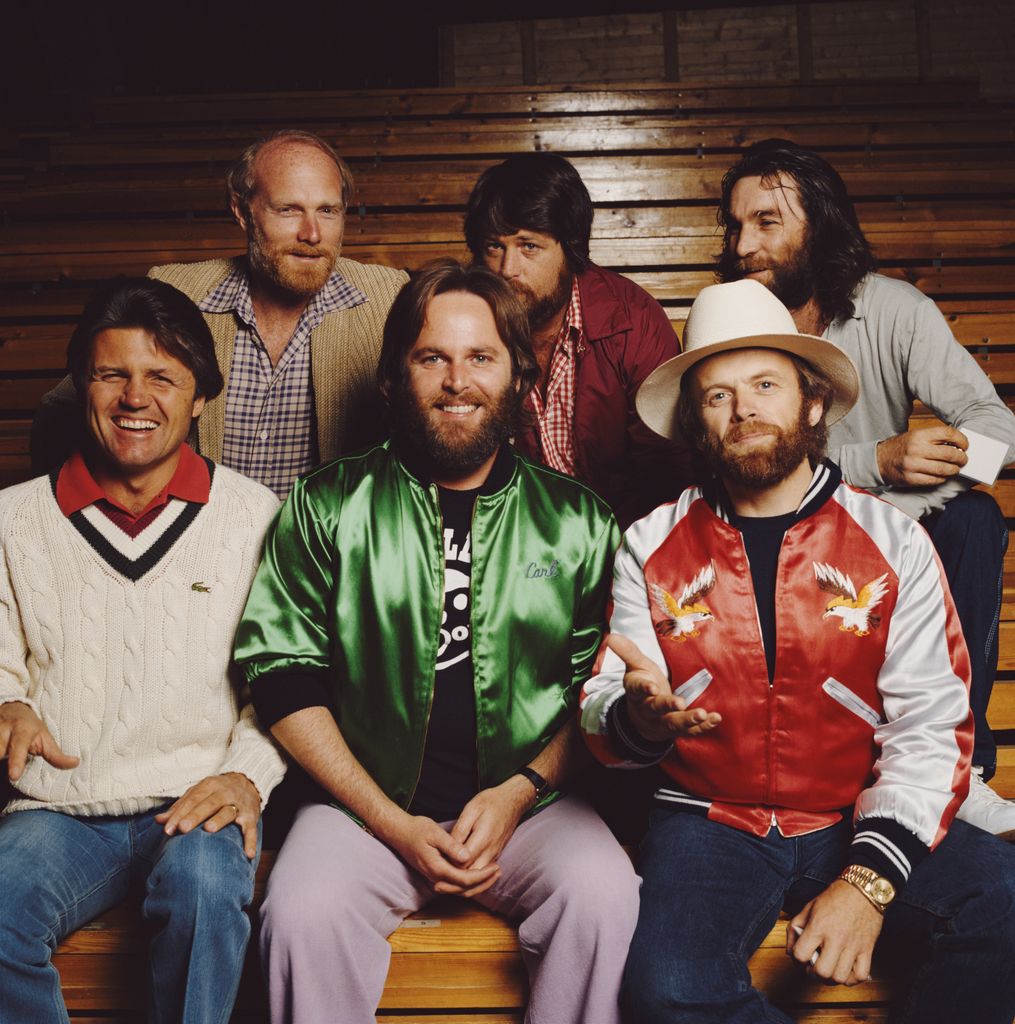 © Getty Images
© Getty Images
Visually, the band’s style became more inconsistent. Matching outfits occasionally made a comeback, but often with a kitschy, cruise-ship quality - Hawaiian shirts, polos, and Dad-like sunglasses replacing their once-iconic Californian cool. Some members, particularly Brian, appeared visibly fragile during rare performances, while Mike Love leaned into a more showbiz persona, complete with baseball caps and sequinned jackets.
Although Landy was fired by Brian's family in 1978, he returned in the early 1990s, following another decline in the composer's health. By now, image was not of importance to the group like it once was, with Brian's on-and-off-again absence and the loss of Dennis uprooting the band's visual identity.
By the 2000s, The Beach Boys continued to reconcile their image as a nostalgic act with the changing landscape of music. Though they had little mainstream commercial presence, their cultural footprint remained substantial. Brian Wilson’s Smile, the album he had famously abandoned in the late 60s, was finally released in 2004 to critical acclaim.
 © Getty Images
© Getty Images
This project was seen as a return to his creative peak, and it reaffirmed his place as a musical visionary. During this period, the band’s aesthetic began to shift, with less emphasis on the matching, preppy outfits of the past.
The casual beach style persisted, but members had grown older and more individualistic in their appearance, leaning into a more laid-back, personal style for performances. They often played to large crowds at festivals and nostalgic events, with their image evolving into that of elder statesmen of rock.
The Beach Boys remain one of the most iconic, enduring groups in rock history, a symbol of California's golden age, both musically and stylistically.









